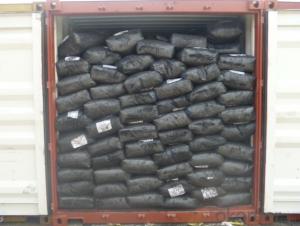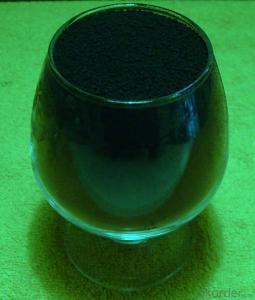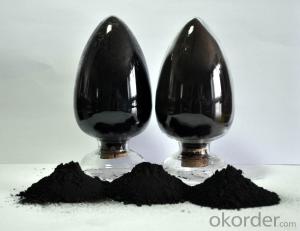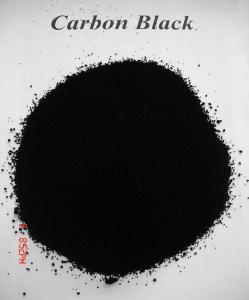Conductive Carbon Black SCF(Granule)
- Loading Port:
- Tianjin
- Payment Terms:
- TT OR LC
- Min Order Qty:
- -
- Supply Capability:
- 10000MT m.t./month
OKorder Service Pledge
OKorder Financial Service
You Might Also Like
Conductive Carbon Black SCF(Granule)
Product Description:
Conductive Carbon Black SCF:
1. Usage : conductive rubber, plastic, radio conductive elements etc.;
2.Product Status: Black granular;
3.Standard: ISO 9001:2000
Suggest for Use:
This product has the low resistance or high resistance performance characteristics, can gift products conductive or anti-static function. Its characteristic is small particle size, specific surface area is large and rough, the structure is high, the surface clean (compounds less), etc.
USES: used for different products, such as conductive rubber, plastic, radio conductive elements etc.
TDS of the Conductive Carbon Black:
Items | Unit | Index Granule | Powder | |
Dubigeon(cm3/g) | cm3/g | 3.5-4.0 | 4.0-5.0 | |
Resistivity(Ω·m)≤ | Ω·m | 1.2-1.8 | 1.0-1.5 | |
PH |
| 7-8 | 7-8 | |
purity(%)≥ | % | 100 | 99.8 | |
Oil Absorption(ml/100g) | ml/100g | 220 | 200 | |
Iodine Absorption(㎡/g) | (㎡/g) | 500 | 500 | |
Heating loss%≤ | % | 1.0-1.3 | 1.0-1.3 | |
Ash %≤ | % | 1.5-2.0 | 1.5-2.0 | |
Semolina %≤ | % | 0.2 | 0 | |
Hydrochloric acid to absorb ml/g≥ | ml/g | 3.0 | 3.0 | |
Safety:
As a matter of good industrial hygiene, gloves and safety glasses with side shields or better eye protection should be worn when handing Carbon Black , For more information, refer to the MSDS.



- Q: Is the catalyst considered a chemical reaction?
- The middle school textbook defines that the catalyst itself does not participate in chemical reactions
- Q: No one knows the expression of the catalyst and the chemical expression of the acridine
- If it is potassium permanganate oxygen, the catalyst is only manganese dioxide, so write on the horizontal line MnO2
- Q: how could scientists know the exact catalyst for every reactions??? THANX sooo much
- Believe me, nema, there's no way that we chemists know the best catalyst for every reaction. That would be simply impossible. However, from the type of reaction, the reactants, products, reaction conditions, solvents, etc. and from one's experience and the literature (papers and patents) one can get a good idea for most reactions of the type of catalyst that has worked for similar systems. One then starts off with a catalyst from the literature and modifies or changes it if improvement is needed based on chemical principles that one learns. There are also some theoretical calculations that can be made. Sometimes they work and sometimes they don't :) If it is an industrially important process like the Haber process for making ammonia from nitrogen gas and hydrogen gas, there may be thousands of catalysts which have been tried and evaluated. New minor improvements are being made every day. When a company does find a very good catalyst for an important reaction, often they keep it a trade secret. The good catalyst can make a huge difference in how commercially successful a particular process is. That's a large part of what chemical engineers do. You may never know if you have the best catalyst. The most you can hope for is one that is good enough. So it's a few parts personal knowledge, a few parts literature, a couple of parts theory, a lot of experimentation and often, more than not, a little luck. :)
- Q: What about the chemical reaction of the catalyst if there is no catalyst?
- The phenomenon of accelerating or slowing the rate of chemical reactions due to the intervention of the catalyst is called catalysis. In the catalytic reaction, the catalyst reacts with the reactants to change the reaction pathway, thereby reducing the activation energy of the reaction, which is the reason why the catalyst can improve the reaction rate.
- Q: the process of which the heterogeneous catalyst work in vehicles. a step by step instruction in how they work. :)
- The Reduction Catalyst The reduction catalyst is the first stage of the catalytic converter. It uses platinum and rhodium to help reduce the NOx emissions. When an NO or NO2 molecule contacts the catalyst, the catalyst rips the nitrogen atom out of the molecule and holds on to it, freeing the oxygen in the form of O2. The nitrogen atoms bond with other nitrogen atoms that are also stuck to the catalyst, forming N2. For example: 2NO =N2 + O2 or 2NO2 =N2 + 2O2 The Oxidization Catalyst The oxidation catalyst is the second stage of the catalytic converter. It reduces the unburned hydrocarbons and carbon monoxide by burning (oxidizing) them over a platinum and palladium catalyst. This catalyst aids the reaction of the CO and hydrocarbons with the remaining oxygen in the exhaust gas. For example: 2CO + O2 =2CO2
- Q: Several experiments were carried out using catalysts
- Hydrogen peroxide in the manganese dioxide as a catalyst for decomposition reaction: 2H2O2 == MnO2 == 2H2O + O2 ↑ (laboratory oxygen principle)
- Q: Is there a catalyst for a chemical reaction?
- There may be many, but some of the catalytic effect of the catalyst is good, and perhaps some of the catalyst has not been found
- Q: give an example of how a catalysts speeds up the rate of reaction?? thank you!!?
- I like the hydrogen peroxide answer, but I just ran out of MnO2 at my house, I guess I will just have to pour some H2O2 into the small cut I have. The bubbles you see are oxygen gas which is formed by the decomposition of the H2O2 catalyzed by the peroxidase enzyme in your blood.
- Q: In biology, the enzyme seems to be a tool for opening a reaction, such as the decomposition of cellulose, such as linked RNA and protein, no enzyme can not. But in chemistry, the catalyst is only a regulatory role, change the reaction rate only. The teacher said that the enzyme is the catalyst. Is there any other effect of the enzyme? (Ignorant high three dogs, you do not spray the big god)
- I do not know the main high school teachers have done with fresh chicken liver grinding solution and ferric chloride solution compared to the decomposition of H2O2 catalytic efficiency of the experiment, the result is ferric chloride plus H2O2 slowly take the bubble, add fresh chicken cups Quickly take bubbles and liquid spill. Indicating that the enzyme is a catalyst, and the catalytic efficiency is far higher than the inorganic catalyst.
- Q: Why does the CuO catalyze the reaction rate faster and faster when catalyzing the decomposition of hydrogen peroxide or tell me how to make the catalyst catalyst faster
- Heating or increasing the contact surface of the reactants.
Send your message to us
Conductive Carbon Black SCF(Granule)
- Loading Port:
- Tianjin
- Payment Terms:
- TT OR LC
- Min Order Qty:
- -
- Supply Capability:
- 10000MT m.t./month
OKorder Service Pledge
OKorder Financial Service
Similar products
Hot products
Hot Searches
Related keywords

























